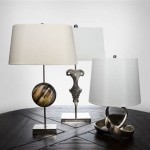Essential Aspects of Interior Decorating Basics
Interior decoration encompasses the art of enhancing the interior of a space to create a visually appealing, functional, and comfortable environment. To master this craft, it is crucial to grasp certain fundamental principles that guide the process and ensure successful outcomes.
1. Understanding Color Theory:
Color plays a pivotal role in setting the mood and atmosphere of a space. Understanding color theory involves comprehending the relationships between different hues, their impact on perception, and how to effectively combine them. The color wheel serves as a guide to harmonious color schemes, fostering visual balance and coherence.2. Space Planning and Functionality:
Efficient space planning ensures that a room is both visually pleasing and practical. It involves considering the layout, furniture placement, traffic flow, and natural light. By maximizing space and minimizing clutter, interior decorators create functional and inviting environments that cater to the specific needs and activities of the occupants.3. Furniture Selection and Placement:
Choosing the right furniture pieces is essential for creating a cohesive and comfortable space. Factors to consider include style, scale, proportion, and upholstery. Proper placement involves arranging furniture in a way that enhances the flow and functionality of the room, while maintaining balance and focal points.4. Lighting and Ambiance:
Lighting plays a vital role in creating the desired ambiance in an interior space. It can be used to highlight architectural features, create focal points, and evoke different moods. Interior decorators employ a combination of natural and artificial lighting, including ambient, task, and accent lighting, to achieve optimal illumination and enhance the overall atmosphere.5. Accessories and Textiles:
Accessories and textiles add personality and warmth to a space. These elements include rugs, curtains, throw pillows, artwork, and decorative objects. They can be used to introduce color, texture, and patterns, as well as reflect the personal style and preferences of the occupants.6. Mixing Styles and Textures:
Mixing styles and textures adds depth and visual interest to an interior. By combining different design aesthetics, such as contemporary with classic or bohemian with traditional, interior decorators create unique and eclectic spaces that reflect a blend of influences. Textures, achieved through fabrics, finishes, and materials, add dimension and tactile appeal, enhancing the overall ambiance.7. Attention to Detail and Finishing Touches:
No interior design project is complete without attention to detail and finishing touches. These elements, including moldings, trims, hardware, and plants, add character and refinement to a space. By carefully selecting and coordinating these details, interior decorators create cohesive and visually appealing environments where every aspect contributes to the overall design scheme.
7 Elements And Principles Of Interior Design Basic Concepts Foyr

The Three Basic Elements Of Interior Design Island Paints

5 Interior Design Basics To Know Designcafe

5 Interior Design Basics To Know Designcafe

Interior Design Basics How To Decorate A Home Décor Aid

5 Interior Design Basics To Know Designcafe

Interior Design 101 Principles Darby Road Home Basics Classes

5 Interior Design Basics To Know Designcafe

The Optical Effect That Colors Interior Design Basics Decor

Back To Basics Interior Design Trends 2024 Covet Edition








